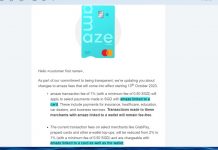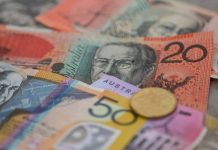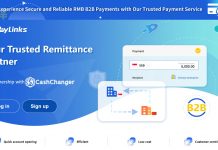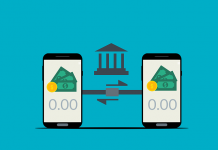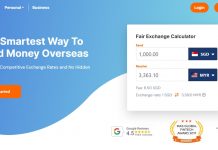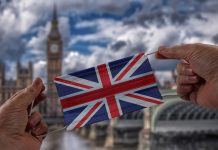
Pegged to the U.S. dollar since 1983, the Hong Kong dollar is usually a dull currency. Except when it isn’t. Heightened tension between the U.S. and China over the city’s autonomy has focused attention on it yet again.
-
How does it work?
The Hong Kong Monetary Authority, the de-facto central bank, has a mandate to keep the currency trading at HK$7.75 to HK$7.85 per U.S. dollar. The current band was set in 2005 and has never been broken, although it’s often tested. When it gets too close to one end or the other, the HKMA intervenes, either by buying or selling the city’s dollars.
-
Why does keeping the peg matter?
First and foremost, the currency peg is considered an anchor for financial stability and the economy. Investors park their money in Hong Kong because the currency is relatively safe and easily convertible — one of the reasons the city became a global financial center in the first place. Breaking the peg would upset that whole equation.
-
What’s the threat?
It’s politics. After China in May said it would impose new national security legislation on Hong Kong, U.S. President Donald Trump responded by saying he would move to end the special trading privileges granted to the city, since it was no longer sufficiently autonomous from the mainland. While he has yet to specify what exactly he will do or when, the law covers many facets of the relationship, from tariffs to visas to rules that affect air travel, shipping and investment. It also allows for U.S. dollars to be freely exchanged with Hong Kong dollars, which if revoked would amount to what some analysts have called the “nuclear option.” -
Why is that?
If the Trump administration limited the HKMA’s access to U.S. dollars, that could hamper the city’s ability to defend its currency tie to the greenback. Such an extreme move would likely prompt people to pull money out of Hong Kong, putting even more pressure on the currency. (Unlike mainland China, where capital flows are tightly controlled, Hong Kong allows money to flow in and out unrestricted.) Fortunes big and small could be lost if the currency collapsed.
-
What are the chances?
Eddie Yue, chief executive of the HKMA, dismissed the idea, which he described as an “apocalyptic” scenario that could backfire on Trump. “With Hong Kong’s financial system closely integrated with the global economic and financial systems, any move that hits our financial system would also send shock waves across the global financial markets, including the U.S.,” he said. “Confidence of international investors in using the USD and holding U.S. financial assets could also be undermined.”
-
Are people worried?
There is little sign of it yet. The currency is trading at the strong end of its band, as impending public stock offerings boost demand for Hong Kong dollars. Bank deposits in Hong Kong increased 0.8% in April from the previous month, the biggest gain in six months. Sustained periods of outflows have occurred during previous bouts of stress such as the global financial crisis and SARS epidemic, and when the U.S. Federal Reserve was raising interest rates. The fear arose again last year as political upheaval roiled the city, though ultimately capital flows remained broadly stable.
-
Should they be?
Officials in Hong Kong say no. The HKMA has more than $430 billion of foreign reserves itself. China’s central bank also can provide U.S. dollars through a currency swap line should Washington impose sanctions on the city, said Financial Secretary Paul Chan. China has the world’s largest foreign-exchange reserves at more than $3 trillion.
-
Could Hong Kong just peg its dollar to the Chinese yuan instead?
The HKMA says no. For the time being, the U.S. dollar is the “most appropriate anchor currency” because it is fully convertible and can be traded freely in large amounts on foreign exchange markets. The yuan doesn’t fit that bill. The U.S. dollar also functions as an international reserve currency and the Fed has a good record of fostering price stability. In addition, Hong Kong’s business cycles are “still more synchronized” with the U.S. than mainland China, it says.
-
What usually moves the Hong Kong dollar?
Often it’s interest rates, especially when local ones don’t move in tandem with the U.S. For example, when interbank rates on the Hong Kong dollar — known as Hibor — remain elevated as the Fed reduces borrowing costs, it becomes more attractive for investors to buy the Hong Kong currency against the greenback. The gap between Hibor and the U.S. currency’s Libor has been around the widest since 1999 since March, helping to push the Hong Kong dollar to HK$7.75 for the first time since early 2016. That prompted the HKMA in April to sell the city’s dollars to prevent a break of the peg.
The Reference Shelf
- A story about HKMA’s intervention on the strong side of the band.
- Learn about how tight liquidity magnifies moves in the Hong Kong dollar.
- Bloomberg’s Fion Li recalls the peg turning 30, and Mark Cranfeld adds up lessons from 1997.
- Bloomberg Opinion’s Nisha Gopalan on Hong Kong as the canary economy.
This blog post was originally published in Bloomberg on 5 June 2020
Do catch us on:
Web: https://cashchanger.co
Telegram: https://cashchanger.co/telegram
Facebook: https://fb.me/cashchanger
Instagram:https://www.instagram.com/cashchangercom/

